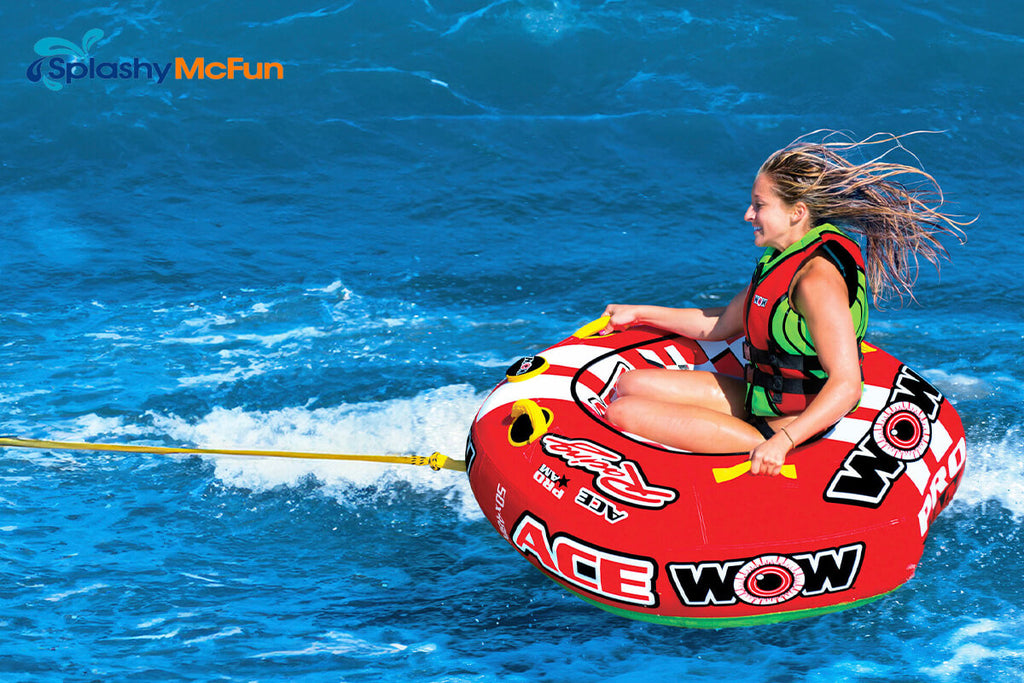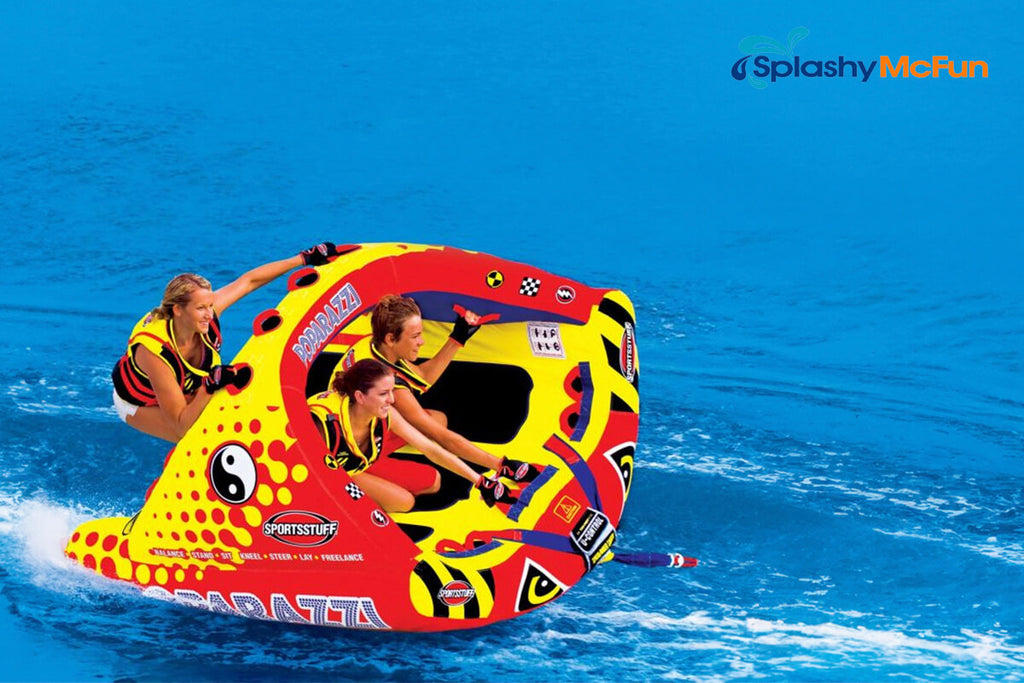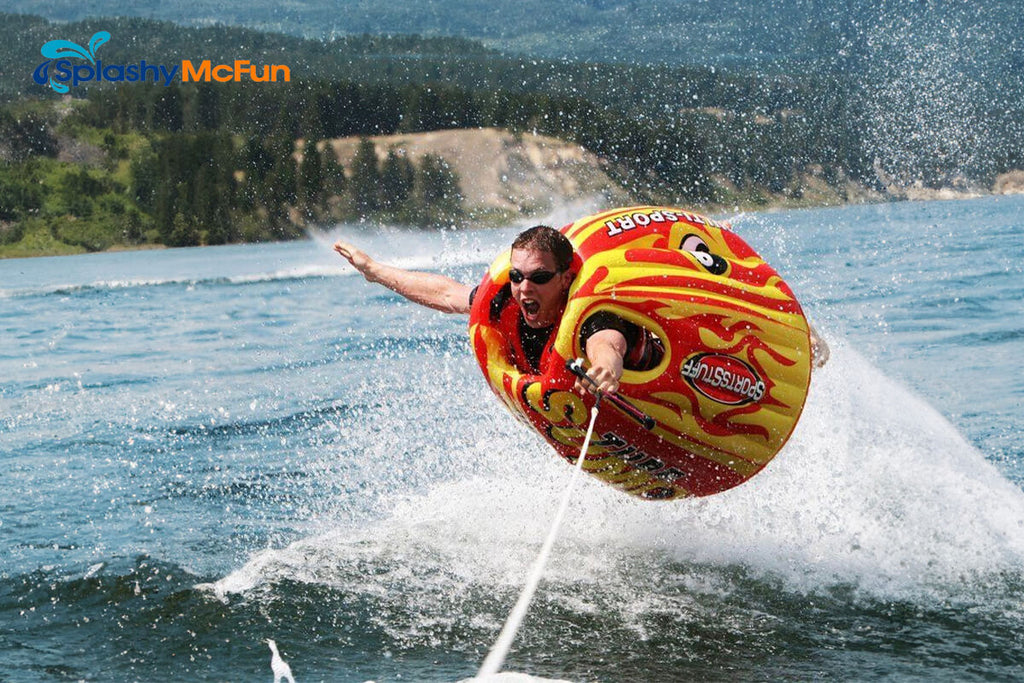- (888)-897-7527
- Free Shipping
- Easy Returns
- Great Customer Service
Main Menu
Paddle Sports
Boating & Swimming
Inflatable Boats
Ice Eaters &. Fountains
How to Choose the Best Boat Tube for Your Family
May 06, 2024 6 min read

How to Choose the Best Boat Tube for Your Family
Picture going to the lake for tubing and looking forward to a fun day, but things don’t go as planned. The tube might be too soft, slowing down the ride, or too hard, causing uncomfortable bouncing. There might not be enough room for everyone, and the rope pulling the tube could be weak, posing a risk to everyone. To avoid these issues, choosing the right tube and equipment is key to a safe and fun day on the water.
This guide talks about choosing the perfect tube, the types available, and how to ensure your trip is safe and enjoyable. It also includes towing rope selection and inflating the tube properly. Keep reading for information on how to get more fun from a tubing trip.
What Are Boat Tubes?
Boating tubes, also known as water towables or water tubes, are oversized inflatable tubes that you can ride. If you fasten them to the back of a boat with a rope, they can glide and bounce across the water’s surface. These tubes are a must-have for fun on the water, no matter if you are just starting or chasing the wave for years.
How Many Riders?
When choosing a boat tube, it's important to consider how many people it can hold. Tubes are made for different numbers of riders to keep everyone safe and make sure the ride goes well. Here are the common sizes:
-
Single-rider tubes: These tubes are compact and designed for individual enjoyment. They offer a thrilling experience with high maneuverability.
-
Two-person tubes: They are great for pairs, allowing for shared fun while maintaining good control and stability.
-
Three-person tubes: They offer more space and are suitable for small groups or families, providing a balanced ride with more interaction among riders.
-
Four-person and larger tubes: These tubes cater to larger groups, with sizes available for up to eight riders. These are ideal for family outings or group activities, offering various seating arrangements and riding styles.
Make sure to only allow the number of people on the tube that it's designed to hold. Putting too many people on it can be dangerous. Each tube has a specified number of spots to hold onto, and in case you overload it, the tube could get damaged or you might even get injured.
Types of Boat Tubes
Knowing how many riders you'll typically have is key, but considering the tube's design is also important. Different tube types suit various ages, skills, and speeds, so consider these factors when choosing.
Open Top Tubes

These classic donut-shaped tubes are versatile. They're suitable for riders of all ages and skill levels, offering various ways to ride. Whether sitting in the center with legs over the side or lying on your stomach with feet hanging off the back.
Deck Tubes

If you're into excitement and speed, deck tubes are the perfect choice. Designed for fast rides, they require riders to maintain a strong grip to stay on. Most riders prefer to lie on their stomachs facing the boat, experiencing thrilling speeds and exhilarating turns.
Ride-In Tubes

Also known as cockpit tubes, ride-in tubes offer a more relaxed and stable ride, making them ideal for younger children and those seeking a gentler experience. With riders sitting lower in the water, these tubes provide a smoother takeoff and a safer ride, making them perfect for leisurely cruises around the lake.
Dual Tow Point Tubes

With tow points on both sides, dual tow-point tubes offer versatility and comfort. Riders can enjoy a seated front position with a convenient backrest, providing a comfortable and secure ride. Additionally, these tubes can be flipped around to create a ‘chariot-style’ riding experience, adding excitement and variety to your tubing adventures.
Banana Tubes

Just like sleds, banana tubes boast a narrow, speedy structure that floats smoothly through water. The tubes are an ideal choice for pontoon boats as they provide a comfortable ride and an excellent platform for such leisure purposes as family and friend time.
Rocker Tubes

The rocker tubes have a curved surface that allows you to side-to-side rock, so you can have a different experience on the cruise. The number of selections is three-stage or U-shaped, and these tubes ensure maximum maneuverability and entertainment for all age groups of thrill seekers.
Unique Concept Tubes

Manufacturers always work hard to make sure riders have exciting and new experiences. These tubes might come in different shapes, like curved ones, or have unique designs. They're perfect for anyone who loves trying new things and having fun on the water.
Materials Used in Boat Tubes
When choosing a boat tube, think about its weight and how long it'll last. Different materials serve different purposes, whether it’s for strength, lasting a long time, or just making sure you're comfy while having fun.
- Nylon: Often referred to by its thickness term "Denier," is a go-to for durability. The higher the "Denier" number, the thicker and stronger the nylon. Lighter, thinner nylon like 420 Denier is cheaper and perfect for solo rides. Thicker nylon, like 840 Denier, is great for larger tubes that fit more people and is usually pricier due to its strength.
- Polyester: When it's coated with PVC, it gets tough, nearly as much as the thick nylon. Plus, it stands up well to the sun, which is why it's also good for boat covers and shades. Small tubes often use 600 Denier polyester with this special coating, while bigger tubes might mix in some nylon.
- PVC or Vinyl: Mostly found on the tube's bottom and inner parts. It's measured by "gauge," with higher numbers meaning thicker material. So, from 24-gauge to 30-gauge, you can choose how tough you want your tube's underside to be.
- Neoprene: The comfy material from wetsuits, is used to cover parts of boat tubes. It's super soft, making your ride more enjoyable and preventing any skin irritation. However, adding neoprene means the tube might cost a bit more.
When selecting your boat tube, consider your priorities: durability, comfort, or perhaps a combination of both should guide your choice!
Picking the Right Tow Rope
According to the rules of the Water Sports Industry Association (WISA), the tow rope needs to be at least 50 feet but not more than 65 feet. If its length is less than 50 feet, then the wake might splash the water in the riders' faces. The tube can start getting unstable if it’s more than 65 feet long, which is not safe.
The strength of the tow rope is also crucial. The weakest rope should support up to 2,000 lbs., and the strongest one 6,000 lbs. depending on how many people you're dragging behind the boat.
How to Properly Fill Up Your Towable Tube
Inflate your towable tube by making it tight and smooth. Follow the manufacturer's air amount guideline. Check and adjust the air if needed due to sun or water effects. After use, deflate, fold, and store away from the sun and damage.
Know your tube's valve type: Boston, stem, or speed. Use an electric pump with the correct attachment.
- Boston Valve: Two caps, one-way air entry. Remove the top cap to inflate; air won't escape. Unscrew entirely to deflate.
- Speed Valve: Easy inflation. Attach the pump, inflate, and close the cover.
- Stem Valve: Common on inflatables. Insert the pump nozzle deeply to inflate; squeeze the valve to deflate.
Proper inflation ensures a fun and safe ride. Adjust the air as the temperature affects it. Deflate, rinse, dry, and store safely post-use.
Conclusion
This guide helps pick the perfect tube for safe and fun water days. It shows how to choose the right size tube for one or many people, a strong tow rope, and how to pump up the tube. Picking the right tube and rope means lots of laughs and exciting rides on the water.
Find your perfect adventure companion in our collection of boat tubes. Dive into the fun today!
You can download this article here: Download
Related Resources:
- Best Towable Tubes for Your Boat
- 7 Best Water Inflatable Tubes for Your Next Family Trip
- Blog: What is a Banana Boat Tube and Why do I Need One? (pdf)
- Banana Boat Tubes Information Slide Show
- Inflatable Banana Boat Tube Infographic
- Why Banana Boat Tubes Are Still The Best Boating Tubes On The Water (Download)(Brochure)(Infographic)
- 7 Best Water Sports For Lake Days (Download) (Brochure) (Infographic)
- Banana Boat Tubes Bring Big Fun on the Water (Download) (Infographic) (Brochure)
- How Boating Tubes will Enhance Your Summer Fun (Download Pdf)
- Best Towable Tubes for Your Boat (Download)
Leave a comment
Comments will be approved before showing up.
Subscribe
Sign up to get the latest on sales, new releases and more …

